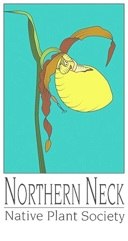Native plants and Capitol Square
This is an A1 example of our VNPS Chapter members outreach to our elected officials in Richmond.
I await the response.
TED
From: Nancy Vehrs via groups.io
Sent: Friday, May 28, 2021 6:19 PM
To: VNPS Board Group
Subject: [VNPS Board] Fw: Native plants and Capitol Square
Hi -
Richard Hall-Sizemore, a member of our Pocahontas Chapter, copied the VNPS on his email to the Governor and the director of the Department of Conservation and Recreation. See below.
Nancy
----- Forwarded Message -----
From: VNPS ORG
To: Nancy Vehrs
Sent: Thursday, May 27, 2021, 10:45:04 AM EDT
Subject: Fwd: Native plants and Capitol Square
---------- Forwarded message ---------
From: Richard W. Hall-Sizemore
Date: Thu, May 27, 2021 at 6:27 AM
Subject: Native plants and Capitol Square
To: <ralph.northam@governor.virginia.gov>
Cc: <clyde.cristman@dcr.virginia.gov>, <vnps.org@gmail.com>
Governor Northam:
As a state employee, I appreciated what your administration did several years ago to encourage folks to visit Capitol Square.
That space is a true jewel that can be, and should be, used to show off the Commonwealth to the rest of the country and to the world. It is now used to highlight figures from the state’s history from the Native Americans who lived here for centuries to George Washington to Barbara Johns to leading women. Overlooking it all is the magnificent Capitol designed by Virginia native Thomas Jefferson.
I propose that it now be used to also showcase other things native to Virginia—its plants. Transforming Capitol Square into a Virginia native plant public garden would be a lasting ecological gift your administration could give to Virginia and its citizens.
The benefits of using native plants are obvious and numerous. As one of the state web sites points out, “Native plants are well adapted to local environmental conditions, maintain or improve soil fertility, reduce erosion, and often require less fertilizer and pesticides than many alien plants.” In addition, native plants support more wildlife species, including pollinators, than non-native plants. This includes more varieties of insects, which, in turn, support bird populations. Fundamentally, native plants are essential to maintaining biodiversity, which is essential to a healthy environment. Aesthetically, native plants provide more landscape interest that the ubiquitous (also garish) lantana, pansies, and daylilies found everywhere, including Capitol Square. Monarda, Echinacea, and St. John’s Wort are just as showy and they attract many more butterflies.
There are a couple of more practical reasons to feature native plants in Capitol Square. First, a large collection of Virginia native plants would attract native plant lovers from all over the state, as well as from out of state. Interest in native plants has been building significantly in recent years. One example is the Plant Virginia Natives Marketing Partnership that has been recently kicked off. Second, using native plants is more economical in the long run. Because natives are adapted to local temperature, soils, and rainfall fluctuations, they often require less watering and maintenance than non-native species. I used to shudder at the waste each year as the DGS staff would bring out flats of perennials and annuals each spring, plant them, then rip them up at the beginning of summer and replace them with other perennials, and then repeat the process the next year. With a well-planned garden of native plants, Capitol Square could have a succession of native plants blooming over the course of the year in each bed, year after year.
Speaking of planning, you have the expertise in your administration to plan the ultimate Virginia native plant garden for Capitol Square. The staff of the Division of Natural Heritage of the Department of Conservation and Recreation is marvelous. Their assistance and involvement was essential to the compilation and publication of Flora of Virginia in 2012, the first comprehensive description of the Commonwealth’s plant life published since the publication of Flora Virginica 250 years prior to that. About five years later, the Flora of Virginia Project, again with the close involvement of the Division of Natural Heritage, released the Flora of Virginia app so that those of us who are really interested in native plants do not have to lug a seven-pound tome around outdoors. In summary, the staff of the Division of Natural Heritage are experts who are dedicated to the wider appreciation and knowledge of the Commonwealth’s native plants.
In addition to these experts in your administration, there are some excellent landscape consultants and vendors who either specialize in, or carry a good inventory of, Virginia native plants. I have dealt with Reedy Creek Environmental, Sandy’s Plants, and Garden Gate Nursery in the Richmond area and Nature by Design in Alexandria, but there are many more throughout the state.
The Virginia Native Plant Society would be another excellent source of advice and also serves as a clearinghouse of sources of native plants in the state. The folks in the Division of Natural Heritage are well acquainted with VNPS.
Although it is now summer, it is not too late to start planning of the transformation of Capitol Square and begin planting in earnest in the fall.
I urge you to consider this idea seriously. After all, if our Capitol Square is to be used to showcase the state’s world-renowned architecture, and its illustrious sons and daughters, why not its beautiful, wonderful plants, as well?
Sincerely,
Richard W. Hall-Sizemore
Member, Pocahontas Chapter
Virginia Native Plant Society
